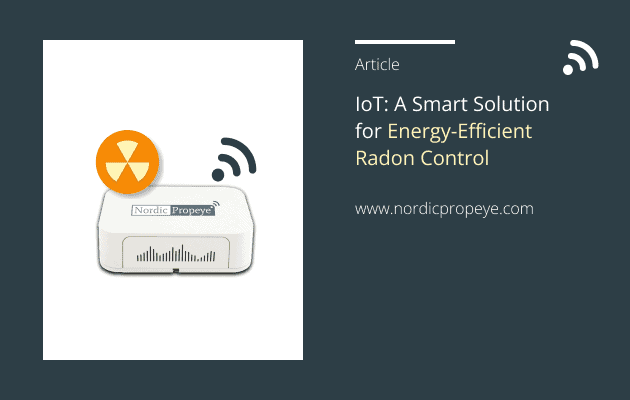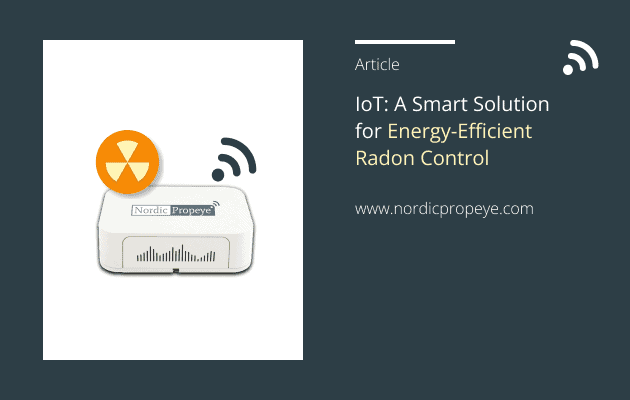Article, October 16th, 2023
Permanent ventilation of radon comes at a high energy price, but new, smart sensors allow for demand-driven ventilation.

As the radon season approaches, the minds of many real estate- and homeowners turn to the invisible threat lurking in their buildings: radon gas. Radon, a naturally occurring radioactive gas, can seep into homes and other structures, posing serious health risks. In many cases, radon gas can be ventilated out of the building. As a result, ventilation systems are often constantly active to maintain low radon levels. This constant operation comes at a high energy cost, leading to both financial and environmental concerns. Fortunately, with new IoT technology, a solution is available that promises not only healthier indoor environments but also significant energy savings – smart radon sensors.
Smart radon sensors, utilizing technological innovations in wireless radio transmissions (Internet of Things/IoT), offer a groundbreaking solution to this energy-intensive dilemma. These sensors are designed to consistently monitor radon levels in buildings and instantly report the data digitally. Unlike traditional radon measurement methods, smart radon sensors are permanently installed in strategic locations, such as basements or other areas with higher radon risk.
Demand-Driven Ventilation:
The game-changing aspect of smart radon sensors is their ability to provide actionable data for demand-driven ventilation. Instead of operating ventilation systems continuously, regardless of radon levels, IoT sensors allow for a more responsive and energy-efficient approach. When radon levels rise to potentially hazardous levels, the sensors trigger the ventilation system to kick into action. As a result, when radon levels are low and safe, the ventilation system can operate at reduced power or even be turned off entirely, conserving energy.
With this use case in key focus, Nordic Propeye released the OY1500 LoRaWAN® Radon gas sensor during 2022. “This device revolutionizes the radon measurement market by providing accurate measurements every 10 minutes, allowing for constant adjusting of ventilation systems based on actual radon levels. Whereas traditional sensors only provide a daily average value, Nordic Propeye’s radon sensors uses high voltage sensing technology to get incredibly fast, accurate radon measurements.”, says Stefan Lindgren, CTO at Nordic Propeye.
Nordic Propeye’s long-term partner Myrspoven offers energy optimization in buildings using AI, and as a part of that demand-driven ventilation to commercial properties and big residential buildings. This results in energy savings and a decreased carbon footprint for the building. “Myrspoven offers AI-based optimization of HVAC systems to optimize indoor climate while saving energy in buildings. Key data for the optimization comes from the HVAC system, but also from carbon dioxide- temperature- and humidity sensors, weather forecasts and energy tariffs. For buildings in areas with high risk of radon levels we can add radon sensors to ensure a safe indoor environment.”, says Tobias Björk, CSO at Myrspoven.
Do you want to learn more about radon sensors and ventilation automation? Contact Nordic Propeye at sales@propeye.se, or Myrspoven at tobias.bjork@myrspoven.com.
Read more on https://nordicpropeye.com/iot-sensors/oy1500/ or https://myrspoven.com/

